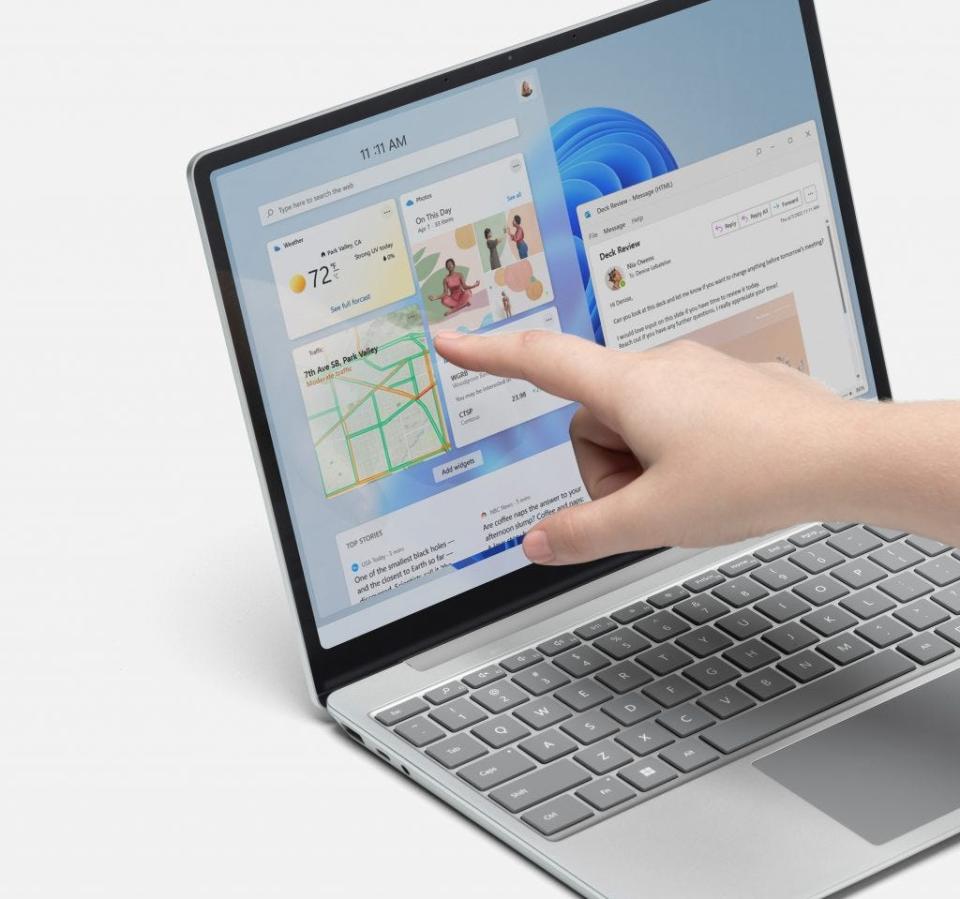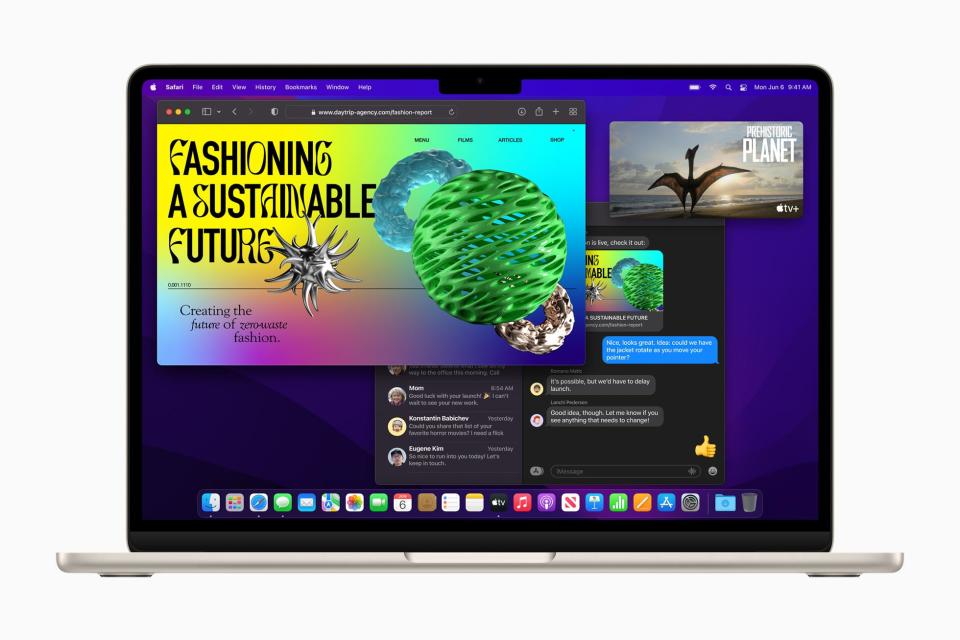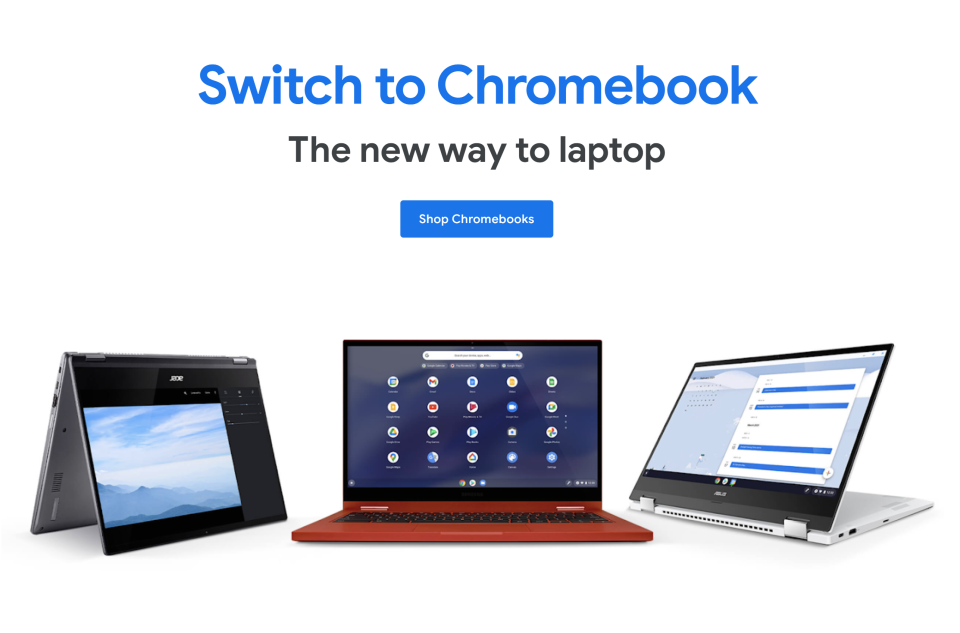Here's what high school and college students should look for in a computer
It’s not just the students facing math problems this back-to-school season: parents are also crunching numbers amid higher costs due to rising inflation.
In fact, more than half of American families say they are forced to cut back on back-to-school shopping this year, according to a new national survey from JLL, a real estate and retail management firm.
Out of the 1,001 parents of school-age children surveyed in June, those who said budgets will be significantly affected by inflation plan to spend 15% than last year, on average.
The price tag matters
Problem is, costs of school supplies have risen considerably, which may translate to doing more with less.
A saving grace, perhaps, is that you may be able to keep the same laptop as previous years, suggests John Burek, executive editor and lab director for PCMag.
“Because of the pandemic, many families had to 'tech up' the last two years, for remote schooling, and so students may be positioned in 2022 to make use of tech they may have already bought,” Burek said.
Nicholas Albert, product marketing, manager for Surface at Microsoft, said he agrees that the pandemic changed how students rely on technology.
“Devices must be equipped with the performance to withstand the demands of the school day, and come with features and software that allows them to stay as productive as possible, whether they are joining a class remotely or in person,” he said.
But for those who must buy a new machine for the school year, along with “greater flexibility,” Albert says students are also looking for “incredible value” in 2022, hinting at leaner budgets.
Should be you be in the market for a new device, the following are a few considerations to help you decide what’s best for you and your budget.
Assess your needs
How you plan on using your new computer should dictate what kind to buy.
If you only want a laptop for light tasks – such as web browsing, word processing, reading email, and checking on social media – then you could go with modest specifications (specs), which should have a modest price, too.
On the other end of the spectrum, if you’re looking for a machine that can handle more demanding tasks – editing video, playing computer games, or creating animation -- you’ll need to invest in pricier specs (see below).
That said, I like to say purchasing a computer should be like buying kids clothes: go a little bigger than you need today, so you can grow into it for longer-term savings. You don’t want to have “buyer’s remorse” by picking something underpowered, only to replace it in a year from now.
“What kind of laptop you go with may be dictated by the curriculum, so be sure to check with the school first before you buy,” advises Burek. “Also, some college campuses have relationships with specific laptop vendors that may have special deals or perhaps offer overnight repairs, so research this, too.”
Make sure to know and choose an operating system. When it comes to buying a new computer, you’ve got three main operating system (OS) choices today: Windows, Mac and Chromebook.
My subjective take on all three
Windows 11 is the most popular choice today. It’s offered by nearly all the biggest computer brands – such as Microsoft, Dell, HP, ASUS, Lenovo, Acer, Samsung, LG, Razer and MSI.
Windows 11 is versatile, easy to use, and it works with the most software and hardware out of any operating system.
What to look for in a Windows laptop
The OS offers multiple ways to interface with your content, whether it’s a keyboard, trackpad or mouse, fingertips on a touchscreen with many models, using a stylus pen on a screen for greater precision (often called “digital inking,” or by using your voice with the Cortana personal assistant.

There is a wide spectrum of prices for Windows 11 devices, starting at $99, and goes into several thousand for gaming PCs.
“This is where we see Surface Laptop Go 2 [from $599], coming in to support and elevate the educational experiences among students,” says Albert. Despite its compact size and 12.4-inch touchscreen display, it features a full-size keyboard and large trackpad.
Should I buy an Apple Mac laptop?
Since Apple is the only one that manufacturers Macs, there is great quality control and they’re built with premium materials. Macs tend to last a long time (but not always their chargers). Be aware Macs cost more compared to Windows and Chromebooks with comparable specs, which might be an issue for many in today’s economy: MacBooks Air starts at $1,199, while MacBook Pro starts at $1,299.

Some users find them easier to use than other operating systems, though that boils down to personal preference. There are no touchscreen Macs, unfortunately. Apple bundles many of its top apps for free, which is great. Those who use iPhone and iPad will find many familiar and convenient features and interconnectivity between Apple devices (like calls and texts on your Mac).
Chromebook rankings
Powered by Google’s Chrome OS, Chromebooks are generally – but not always -- more affordable than Windows and Macs, but students should first make sure it can handle their specific curriculum as most Chromebooks have modest specs and have limited storage (but most Google apps are cloud-based, so it might not matter to you so much).

Chromebooks usually ship with popular Google apps already preinstalled, such as Gmail and Google Maps, and an integrated Google Play store means you can download many other apps. Chrome OS is billed as a lean, secure, and fast operating system. Chromebooks start at just $89.
“Some college students have a ‘beater’ laptop, such as an inexpensive Chromebook, to take notes during class, but a more powerful machine back in their dorm room for entertainment, such as gaming,” adds Burek.
Select your specs
The laptop’s processor (CPU) is the engine that drives your laptop’s performance. As such, it’s your most important consideration. Go at least with an Intel Core i5, or better yet, a Core i7 or (budget permitting), a Core i9 for gamers. The higher the number, the better. Similarly, AMD Ryzen R9 is better than R7.
If you want a gaming PC, a graphics processor is critical. Like your CPU, you can’t upgrade graphics in laptops, so invest in a good one out of the gate, such as an NVIDIA GeForce RTX (or at least GTX), or an AMD Radeon RX.
Also referred to as system memory, RAM is a computer’s short-term memory, which stores the info your laptop is actively using so that it can be accessed quickly. The more programs your system is running, the more memory you’ll need.
I’d recommended at least 12GB or 16GB (gigabytes) or RAM, but 32GB is even better, naturally.
For “long-term memory,” it’s recommended to go with a solid-state drive (SSD) opposed to a hard-disk drive (HDD), because it’s faster, smaller, lighter, quieter, and more durable since there are no moving parts (which helps with laptop battery life). The more storage you have (such as 1 terabyte over 512 GB), the more apps and files your computer can hold.
Finally, also look for long battery life, fast Wi-Fi 6/6e wireless speeds, and several ports along the side of the laptop (or go with a USB-C “hub” to add extra accessories).
==
Follow Marc on Twitter for his “Tech Tip of the Day” posts: @marc_saltzman. Email him or subscribe to his Tech It Out podcast. The views and opinions expressed in this column are the authors, and do not necessarily reflect those of USA TODAY.
This article originally appeared on USA TODAY: How to find the best laptops for college, high school students

 Yahoo Movies
Yahoo Movies 
